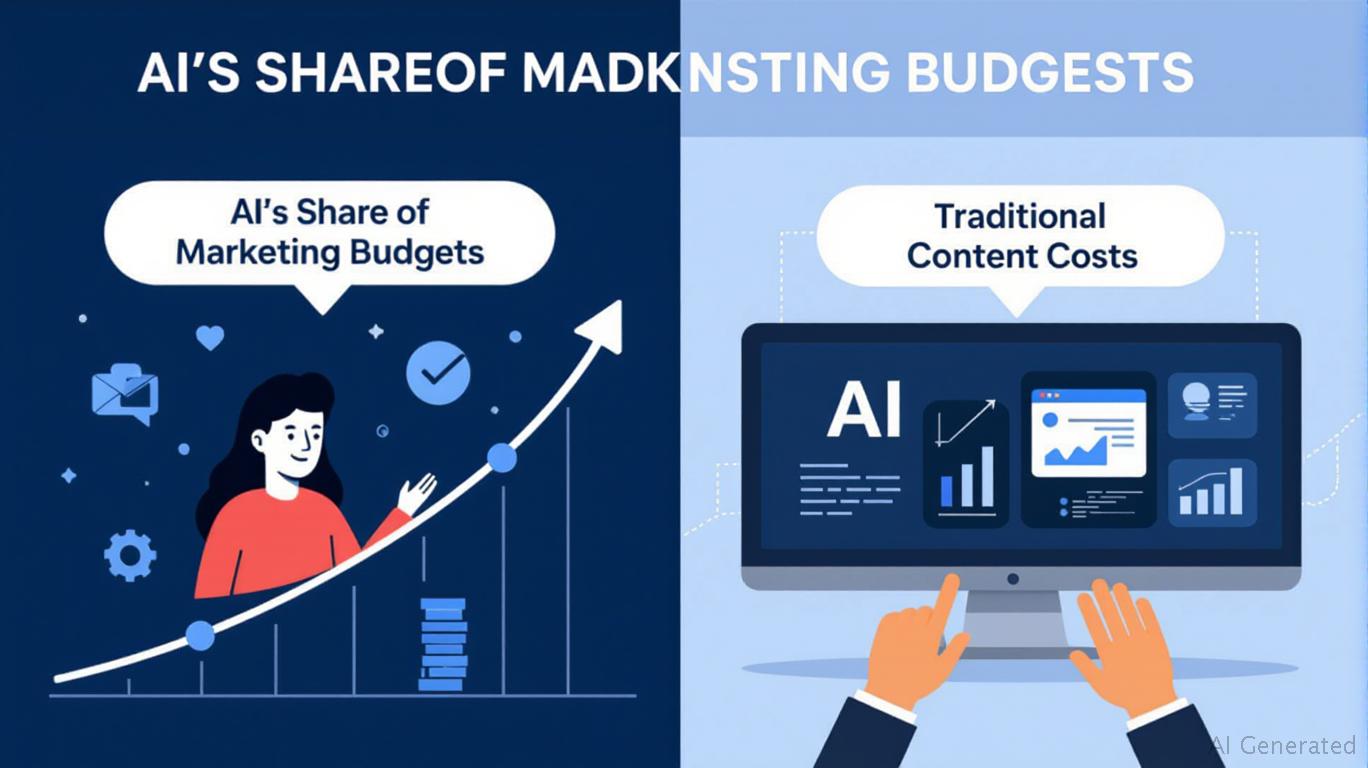AI-Driven Content Creation Tools: The Silent Revolution Reshaping Marketing Budgets – AInvest
News/
Articles/
Articles Details
Tracking the pulse of global finance, one headline at a time.
The rise of AI-driven content creation tools is quietly transforming how businesses allocate marketing budgets, with implications for cost efficiency, scalability, and ROI optimization that are too significant to ignore. As companies like OpenAI, Semrush, and others roll out tools like ChatGPT, ContentShake, and Copy.ai, the question is no longer if businesses should adopt these technologies but how quickly they can adapt to avoid falling behind. For investors, the stakes are clear: companies that harness AI for content creation stand to gain competitive advantages, while those that underestimate its potential face financial risks—from wasted budgets to eroded market share.
The most immediate benefit of AI-driven content tools is their ability to slash labor costs while maintaining or even improving output quality. Take Semrush’s ContentShake, which uses AI to generate, optimize, and audit content across platforms. By automating tasks like keyword research, tone adjustment, and plagiarism checks, it reduces the need for human editors and writers—a critical advantage for mid-sized businesses with constrained budgets. Similarly, ChatGPT’s integration into marketing workflows allows teams to draft emails, social media posts, and even ad copy in minutes, at a fraction of the cost of freelance writers or agencies.
NerdWallet’s 2024 survey underscores the financial risks of underestimating these tools. Only 3% of U.S. households use AI tools for financial advice—a figure that hints at broader corporate reluctance to adopt AI in content creation. Yet this hesitation is misplaced. The survey also reveals that 26% of non-users cite a lack of awareness about AI’s capabilities, while 31% distrust its outputs. For businesses, this means there’s a first-mover advantage in educating teams and customers about AI’s reliability, turning skepticism into an opportunity to build trust and reduce costs.
AI’s true power lies in its scalability. Unlike human teams, which face physical limits on output, AI tools can generate thousands of personalized pieces of content daily—tailored to regional markets, customer segments, or real-time trends. For example, an e-commerce company using AI could automatically update product descriptions to align with sudden spikes in search terms for “sustainable packaging,” while a financial services firm might adapt its messaging to reflect inflation fears or interest rate changes.
This adaptability is already reshaping ROI metrics. A 2023 Gartner study found that companies using AI for content creation saw a 15–20% increase in engagement rates and a 30% reduction in per-customer acquisition costs. For investors, the data is compelling: companies like Semrush (SEMR), whose tools integrate AI for content optimization, have seen revenue grow at a 25% CAGR over the past three years, outpacing legacy marketing software firms.
NerdWallet’s findings highlight another critical point: the financial risks of sticking with outdated methods. The survey notes that 29% of Americans regret neglecting emergency savings—a behavior that could be mitigated with personalized, AI-driven financial literacy content. For businesses, the parallel is stark: clinging to human-centric content creation risks missing opportunities to engage customers at scale with timely, relevant messaging.
Consider the automotive industry. A dealership using AI could analyze local economic data to auto-generate ads emphasizing affordability during a recession or luxury features during a boom. Without AI, it might rely on a single marketing team to manually adjust campaigns—a slow, error-prone process that delays ROI.
The AI content creation space is still nascent, but clear leaders are emerging. Investors should focus on three categories:
1. Platform providers: Companies like Semrush (SEMR) and BuzzSumo (acquired by Brandwatch) offer AI-powered content analysis and optimization tools.
2. AI-specific content engines: OpenAI’s API offerings and Jasper.ai provide scalable content generation, while startups like Apteo focus on SEO-driven AI content.
3. Enterprise solutions: Adobe (ADBE) and Salesforce (CRM) are integrating AI into their marketing clouds, enabling real-time content adaptation for large clients.
Avoid companies still reliant on “vanilla” content management systems or those slow to adopt AI—like HubSpot (HUBS), which trails in AI integration despite its dominance in inbound marketing.
The message is clear: businesses that adopt AI-driven content creation tools can achieve cost efficiencies, scale effortlessly, and capture higher ROI by staying agile to market shifts. NerdWallet’s survey serves as a cautionary tale: underestimating AI’s role risks leaving money on the table and customers in the hands of competitors. For investors, the path is equally straightforward—back the firms turning AI into a marketing budget game-changer. The next wave of marketing innovation isn’t coming; it’s here. Those who ignore it will be left behind.
No comments yet






